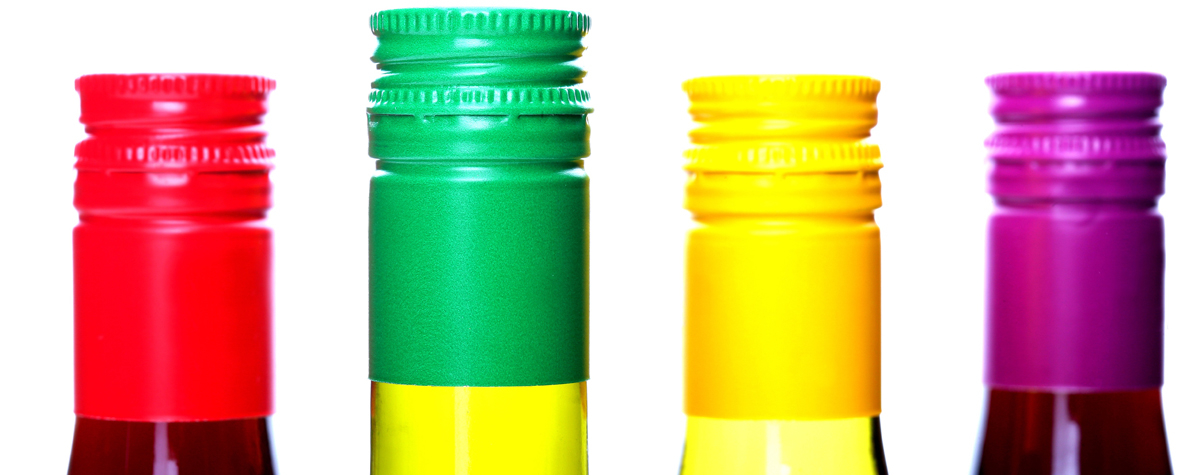This was when a small group of producers in Australia – Leasingham, Majella, Logan and, most famously, Orlando Wyndham, decided to screwcap some of their production. The following year, a group of 16 Clare Valley wineries banded together to get a big enough order for the right bottles and put their premium Rieslings under screwcap. The market responded with enthusiasm and, within a decade, 80% of Australian wines were sealed this way, and now it’s hard to find an Australian wine with a cork (although there has been a small swing cork’s way because of the Chinese market’s preference for this closure).
The story in New Zealand is similar: from 2001, when 28 producers launched the NZ Screwcap Wine Seal initiative, there was rapid adoption, and now almost all Kiwi wine is screwcapped.

Elsewhere, screwcaps have made deep inroads in some markets, while being regarded with some suspicion in others. But they have been tremendously successful, and, as well as removing the risk of cork taint and being easy to open, they are also inexpensive, saving producers money.
But there have been some issues, most notably the claim that because the screwcap provides such a tight seal, letting very little oxygen in, that they can be responsible for the wine fault known as reduction.
Reduction is the presence of certain volatile sulfur compounds in wine above their threshold levels, such as sulfides, disulfides, thioesters and mercaptans (aka thiols). These are initially created by yeasts, but can emerge in wines which have been kept away from oxygen. The best-known reductive compound is hydrogen sulfide, which smells of rotten eggs and drains, but that’s not what we are talking about here. The reduction that has been claimed to develop under screwcap is more of the rubber-like character that some forms of reduced sulfur compounds can show.
‘The screwcap proved superior to the other closures in every regard, except for the continued trace of rubber in the sensory analysis’This was noted in a famous research study from the Australian Wine Research Institute, published in 2001. They looked at the same wine – a 1999 Clare Valley Semillon – sealed with 14 different closures, including a screwcap with the tin/saran liner that is the most widely used for wine. The screwcap performed best on almost every level, except for the fact that the tasters in the sensory lab picked up faint traces of rubber, which in the publication the scientists put down to the presence of volatile sulfur compounds. The study continued until the last publication, five years post bottling. The screwcap proved superior to the other closures in every regard, except for this continued trace of rubber in the sensory analysis.
This result was picked on by opponents of screwcaps, who alleged that the closure is causing reduction to appear in wines that otherwise would have been clean. The theory behind this is that the volatile sulfur compounds exist in what is known as a redox equilibrium state, and can change form according to the redox potential of the wine. And different forms of sulfur compounds have different sensory thresholds. So, in practice, this means that if you bottle a wine with a certain level of disulfide, for example, that is below threshold (you can’t smell it), and it changes in bottle to a mercaptan with a lower threshold, suddenly you can smell the mercaptan. With cork, the small amount of oxygen present in the cork diffuses out into the wine over the first few months after bottling, and then there is a steady-state level of oxygen transmission, which seems to be enough to avoid causing the change in redox potential that might cause post-bottling reduction aromas. Of course, corks – as a natural product – vary in the amount of oxygen they let in. But that’s another story.
‘The development of reductive characters is more related to fermentation and winemaking choices than it is to the closure’So this is the theory. It is possible for the very tight seal of the tin/saran liner in screwcaps to cause reductive characters to appear in some wines. But what about in practice? Despite these scares, it seems that screwcaps are doing just fine. Billions of bottles are sealed with them each year, but there hasn’t been much complaint from consumers about reduction. And in the November/December issue of Wine and Viticulture journal in Australia, AWRI scientist Eric Wilkes did an analysis of faults data from the International Wine Challenge. Looking at nine years’ worth of results, including over 100,000 bottles, the rate of bottles rejected because of reduction was the same for cork as it was for screwcap. Wilkes concludes that the development of reductive characters is more related to fermentation and winemaking choices than it is to the closure, and that it seems that reduction can develop post-bottling irrespective of the closure.
Dr Jamie Goode completed a PhD in plant biology and worked as a science editor before switching to wine. He writes widely for a range of magazines, has written four books, including Wine Science, and lectures and judges wine around the world. He is co-chair of the International Wine Challenge.













.png)






